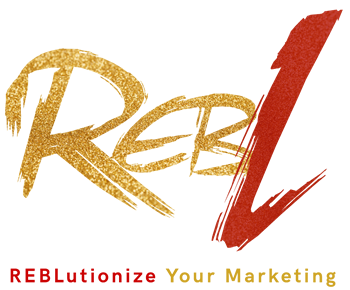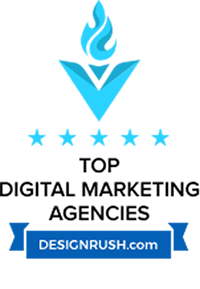How Long Should a B2B Video Be?
When determining the right length for your video content, it becomes critically important to recognize the average attention span of the current audience. Have you heard that people’s attention spans are now comparable to that of a goldfish? That is a scary thought. How are we as marketers supposed to work with less than 9 seconds to tell our story to the target audience and convince them to take some sort of action?
In this blog, we are going to discuss the ideal lengths for B2B videos. The good news? You do have options.
What Do Studies Tell Us about Audience Attention Spans?
In reality, Dr. Gemma Briggs, a psychology lecturer at the Open University has stated the following: “It’s very much task-dependent. How much attention we apply to a task will vary depending on what the task demand is.”
So what are some of the stats on how video length has changed? Vid-yard conducted a study in 2021 and found that “The average length across all videos in 2020 was about 6 minutes—which is up from the 4-minute average of the previous year’s study.” They also saw “a 66% increase in the number of videos over 20 minutes in length.”
How Do We Adapt as Marketers?
The answer here is really that it all depends on the format, the topic, and who you are trying to reach. Consumers and B2B companies alike want a choice in terms of how much content they want to consume.
Offering your audience a variety of long and short-form content is the ideal way to go. If all of your videos run 50 minutes long, those not looking to learn more might feel like that’s way too much of a commitment and might choose to opt out instead.
In reality, the goldfish comparison is a MYTH. Since this isn’t a science blog, we won’t go into the specific data, but we’ll leave a link below for those of you who want to read more about the findings.
Considering that “Over 70% of business buyers watch videos to complete their product or service research,” it’s clear that a well-thought-out approach to your B2B video content strategy is key. We’ve compiled a list of the common types of B2B videos, best practices on length, and some tips to help you create your best videos by type.
Commercial or Promotional Videos = 30 – 60 seconds (Also known as Hype or Teaser Videos)
- Good for brand awareness, lead generation, website or specific landing page traffic
- Can work well for big events, virtual conferences and more
Commercials that run on TV can be anywhere from 15, 30 to 60 seconds but 30 seconds has been found to be the “Ideal Commercial Length” when taking brand recall into consideration.
30 seconds is the ideal time for a television commercial that’s creative, memorable, and engaging enough to entice the viewer to learn more—which is to say, to conduct research online, to contact you, or to visit an online or retail store and purchase the product or service.
Another measure of successful advertising is brand recall. Studies have shown that if the advertisement is able to engage all three memory banks – sensory register, short-term memory, and long-term memory in the minds of the target audience, the ad will translate better for brand awareness.
When it comes to commercials that run online, the trend is very different. Brands like Geico have mastered 6-second commercials, to the point that you rarely have enough time to skip them – but they’re the exception to the rule.
Studies show that “38% of consumers think online ads should be shorter than TV ads.” For online videos, keep them short and simple. Make your video length 15 seconds or less so viewers are more likely to watch it in its entirety. Video ads that are 15 seconds or less can also be used for Instagram Stories and Facebook in-stream placements.
Explainer Video = 60 – 90 seconds
Explainer videos present an analysis of a problem and establish how your product or service offers a resolution. Some consider these “top-of-funnel,” and recommend that they run no longer than 60 seconds. You can get away with 90 secs if the content is important and relevant to the buyer’s journey.
Expert Tip: Highlight Customer Pain Points to Introduce Your Solution in these types of videos.
Instructional How-To or Tutorial Videos = 2 – 10 mins
By this point, you have engaged your audience, and the goal now is to teach – not entertain. Or, perhaps they are customers, and the goal is therefore to teach them how your product or service works. A good rule of thumb is to condense your message and be concise and to the point so the videos will be appreciated and perhaps even shared with others. These videos are ideal for YouTube and your website.
Product & Service Demo Video = 2 – 5 mins
The Walkthrough Videos offer a more substantial tour of your product or service and the recommended length for these videos is up to 5 minutes. It’s during this time that it’s appropriate to divulge more detail about your company and the results your product or service can provide.
For Demos, it’s best to produce shorter videos (in the 2min range) to demonstrate each aspect or feature of your product than to create one long video. The bite-sized content is easier for your viewers to consume, and you can always combine them into a playlist for viewers who may want to view all the content in one setting.
Case Study = 5 – 10 mins
Case study video length can vary widely, but viewers are likely mid or late-stage prospects who are apt to consume 5 to 10 minutes of video. You can always cut up longer video case studies into bite-sized 60 to 90-second testimonials, which are useful on your website, in email, and on social channels.
In a case study video, brands choose whether to stage a scenario or use a real example of customer satisfaction. In order to be successful with a case study, it’s important to outline the initial problem, solution applied, and results.
Research Says This Type of Video Closes More B2B Sales”
Prospecting Video = 30 – 60 seconds (We recommend staying on the shorter end)
Video prospecting is where a salesperson records and sends a short, personalized video to a prospect. These prospecting videos are typically sent via email but can also be shared through text or as a private message on LinkedIn or other social platforms. The goal is to replace traditional, boring emails with something that’s more eye-catching and engaging. With video email prospecting, your message remains the same – it’s just being delivered in a different format: Video Format.
Culture Video = 2 – 4 mins
When making your company culture videos, these should not be of just the executive team. Highlight team members, clients, the company dog, etc.! Show how your company lives its values out, every day. What does it mean to be part of your company culture? That’s what you want to illustrate.
Recruiting-Style Culture Video = 1 – 2 mins
Recruiting videos should be shorter. Candidates are looking at a lot of different positions. Capture and use B-roll of the office space and activities the team does together, such as a baseball game or event. The script should be written from the point of view of the team members. You want potential candidates to see themselves in this video.
Interview Style / Q&A = 6 – 10 mins
Any time you’ve got willing participants and a subject worthy of discussion, an interview video makes sense. Many companies will create this type of content while at an event, taking advantage of the numerous high-profile attendees. It’s also a popular format for a recurring series and can position you and the employees in your company as thought leaders.
Interview style is also an out of the box BD tactic. Interview potential clients and warm them up to you. It’s a soft way to introduce yourself by highlighting them. Featuring current clients makes them feel like a star and they are usually very grateful to share their story on your platform. We love interviewing clients! It’s a great way to recognize them.
Thought Leadership Video = 10 – 15 mins
Thought leadership video length depends on the use case, format, and content. If you’ve got a well-rehearsed, relevant message, 10 to 15 minutes should be appropriate. This is also the preferred format for YouTube. You can repurpose a presentation you often do or speech. Just remember the topic should be thought leadership, not sales. Viewers should get real takeaways from your video. The best thought leadership videos inspire people to take some sort of action.
(As a comparison – that’s about the length of a TED Talk.)
Testimonial Video = 1:30 – 1:45 mins (as recommended here)
Testimonial videos should be two minutes or less. Any longer, and you risk viewers clicking away from your videos. Testimonial videos are the best sales tool you can create. Potential customers hearing from real clients of yours can close deals. People want to work with people they can trust and feel confident in. There is no one better to tell them you’re trustworthy than your clients on video. Video testimonials are also more believable than written testimonials, because the client is actually on camera speaking to the audience.
Storytelling Video = Format > Duration (meaning, it varies)
“Use a storytelling video if your message or product needs humanizing.”
These videos can be used to describe:
- Your customer’s journey
- Your company’s journey
- Your origin story
- Your mission statement
According to Pixar, there are 22 rules of storytelling. Here’s #4: “Every story is unique, but the general structure is similar. It’s described as the classic model of storytelling that we, as humans, have an innate ability to understand.”
- Once upon a time ______.
- Every day _______.
- Then one day _________.
- Because of this ________.
- And because of that ________.
- Until finally ___________.
Remember to always make your customer the hero of your video story!
Have a question? Want to learn more? Reach out today! We’d love to help.
All references:
https://www.testimonialhero.com/blog/3-proven-b2b-testimonial-templates-to-use-with-your-customers
https://www.facebook.com/business/help/144240239372256?id=603833089963720
https://www.marketingdive.com/news/study-38-of-consumers-think-online-ads-should-be-shorter-than-tv/520760/
https://www.voices.com/blog/effective_length_for_tv_commercials/
https://spinsucks.com/social-media/b2b-video-length/
Cincopa: Pitch Deck Videos
LinkedIn Blog: 6 Types of B2B Video and When to Use Them
Vidyard: The 9 Types of Videos to Use for Business Success
Vidyard: How Long a Video Should Be




